Rob Bignell's Blog, page 363
August 10, 2013
Check out editor’s books at Wisconsin libraries
Four of my books are now available for borrowing at west-central Wisconsin public libraries:
g Headin’ to the Cabin: Day Hiking Trails of Northwest Wisconsin – Amery, Cumberland, Frederic, New Richmond, Rice Lake, River Falls (with copies coming soon to Eau Claire and Hudson!)
g Hikes with Tykes: A Practical Guide to Day Hiking with Kids – River Falls
g Hikes with Tykes: Games and Activities – River Falls
g Windmill: A Novel – River Falls
You can check out the books through interlibrary loan if it’s one of the 50-plus public libraries that are part of the MORE consortium in western Wisconsin.
Need an editor? Having your book, business document or academic paper proofread or edited before submitting it can prove invaluable. In an economic climate where you face heavy competition, your writing needs a second eye to give you the edge. I can provide that second eye.
Related articles
 Fourth book in 'Hittin' the Trail' series released
Fourth book in 'Hittin' the Trail' series released Idlewild Outfitters hosts editor's meet-the-author
Idlewild Outfitters hosts editor's meet-the-author
August 9, 2013
Editing client, Ed Wyns, publishes first novel
Ed Wyns, 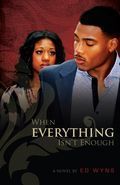 a recent editing client of mine, has published his first novel, “When Everything Isn’t Enough”. The story follows the lives of:
a recent editing client of mine, has published his first novel, “When Everything Isn’t Enough”. The story follows the lives of:
g David Tanner – A man who believes he’s lost everything that makes him a man but doesn’t understand he’s losing the most important thing to him…
g Mia Collins – A woman who suddenly realizes the man she’s built her life around no longer wants what she desires to give him…
g CJ Fields – A self-made man who finds himself irresistibly drawn to a woman who definitely is not his type…
As the story unfolds, the three find themselves on a collision course that threatens to destroy each of them. “When Everything Isn’t Enough” can be purchased online.
Need an editor? Having your book, business document or academic paper proofread or edited before submitting it can prove invaluable. In an economic climate where you face heavy competition, your writing needs a second eye to give you the edge. I can provide that second eye.
Related articles
 Editing client releases short story anthology
Editing client releases short story anthology Editing client publishes first novel, 'The Highway'
Editing client publishes first novel, 'The Highway' To eliminate exposition in story, 'film it'
To eliminate exposition in story, 'film it' Tighten writing by cutting begin fallacy
Tighten writing by cutting begin fallacy Get it right, all right vs. alright
Get it right, all right vs. alright
August 8, 2013
What needs to go on your book’s title pages
The very 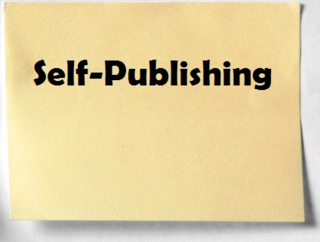 first pages readers will see when they open you book are the title pages? Titles pages? Yes, you’ll have two of them.
first pages readers will see when they open you book are the title pages? Titles pages? Yes, you’ll have two of them.
The first is the half title page, which just lists the title and author’s name, both in large letters, and maybe the publisher. Sometimes this is referred to as the cover page. The second one is the title page, which lists everything on the half title page, your ISBN, and so on, usually in very small lettering. Some people call this the “copyright page” because it gives the year that the book was first published.
To give your book a professional appearance, you’ll need both title pages. Keep each to a single page, however.
The half title page is fairly easy to put together. Its three parts include:
g Book title (with the subtitle)
g Author’s name
g Publisher’s name and city
The title or copyright page is a bit more intricate. Its parts, from top to bottom, include:
g Title of book (with subtitle)
g Author’s or editor’s (if an anthology) name
g Copyright date
g Credits for who took photos, designed the cover, drew illustrations, created charts
g Listing of rights (always use “All Rights Reserved” for your self-published book)
g Passage limiting use of reproduction of the book
g Passage stating characters and events are entirely fictitious (if a novel)
g Passage stating you bear no responsibility for advice (medical, financial, etc.) dispensed (use passage only if such advice is provided)
g Credits if parts of the book (such as whole short stories or essays) were reprinted from another source
g Publisher’s name and address
g Address for publisher or for your book’s website (or both)
g ISBN and Library of Congress Control number
g Country where book was printed
g Month and year of first printing and of the current edition’s printing
The title pages can be designed in any number of ways. Look at books that are the same dimensions (width and height) as the one you’re writing and follow that format.
When listing credits on the title page, you can include anyone you like. But generally the modus operandi for title pages is to only list those who created material actually reproduced in the text. This primarily would include the book’s authors (if an anthology, the editors instead), the photographers, the cover artist/designer, and illustrators. A host of others who helped with your book more properly belong in the acknowledgements. These include editor and proofreaders, agent/manager, contributors/advisers, research assistants, office and contracted staff (attorney, accountants, secretaries/exec assistants, and book paginators. Regardless of who you select for the title page, make sure you have names spelled and titles given correctly.
Need an editor? Having your book, business document or academic paper proofread or edited before submitting it can prove invaluable. In an economic climate where you face heavy competition, your writing needs a second eye to give you the edge. I can provide that second eye.
Related articles
 How your text should appear in a formatted book
How your text should appear in a formatted book Value of creating your own publishing company
Value of creating your own publishing company Decide what your book's website will look like
Decide what your book's website will look like
August 7, 2013
Direct info: First hand vs. firsthand vs. first-hand
Anyone who’s 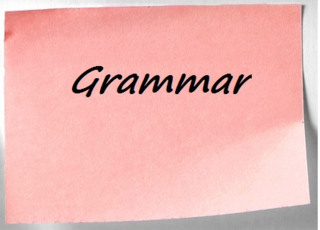 used the English language knows from direct experience that multiple spellings of many words exist. Such is the case with this set of words.
used the English language knows from direct experience that multiple spellings of many words exist. Such is the case with this set of words.
Traditionally, first-hand (with a hyphen) is an adverb, as in: We’d seen first-hand the horrors of living in a war-ravaged country. In this case, first-hand shows how something was seen (which is a verb).
Firsthand (all one word) is an adjective, as in: Thanks to the outdoor navigation course, we had firsthand experience using a compass. In this sentence, firsthand shows the kind of experience (which is a noun) that one had.
First hand (two words), however, is improper (no matter how well one knows English).
Need an editor? Having your book, business document or academic paper proofread or edited before submitting it can prove invaluable. In an economic climate where you face heavy competition, your writing needs a second eye to give you the edge. I can provide that second eye.
Related articles
 Get it entirely right: All together vs. altogether
Get it entirely right: All together vs. altogether Cleaner grammar: Bated breath vs. baited breath
Cleaner grammar: Bated breath vs. baited breath Getting to the core: Amid vs. amidst
Getting to the core: Amid vs. amidst
August 6, 2013
Editing client publishes first novel, 'The Highway'
Steven Grosso, 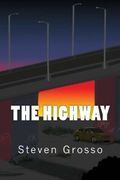 a recent editing client of mine, has published his first novel, “The Highway.” The book tells the tale of Philadelphia homicide detective Benny Steel, who faces a turning point in his life...he either can lose the idealism that brought him to the police force or fall into the trap of the cynical outlook that so typically accompanies a cop who’s served too long. Once paired with new detective in training Marisa Tulli, though, he may have found a way to retain his idealism, but then again... “The Highway” can be purchased online.
a recent editing client of mine, has published his first novel, “The Highway.” The book tells the tale of Philadelphia homicide detective Benny Steel, who faces a turning point in his life...he either can lose the idealism that brought him to the police force or fall into the trap of the cynical outlook that so typically accompanies a cop who’s served too long. Once paired with new detective in training Marisa Tulli, though, he may have found a way to retain his idealism, but then again... “The Highway” can be purchased online.
Need an editor? Having your book, business document or academic paper proofread or edited before submitting it can prove invaluable. In an economic climate where you face heavy competition, your writing needs a second eye to give you the edge. I can provide that second eye.
Related articles
 Clients release first novel, 'Quiet Amish Courage'
Clients release first novel, 'Quiet Amish Courage' Editing client releases adopting orphans memoir
Editing client releases adopting orphans memoir Chetek, Wis., bookstore hosting editor reading
Chetek, Wis., bookstore hosting editor reading How to find a good editor or proofreader
How to find a good editor or proofreader Five style issues to watch for in your story
Five style issues to watch for in your story
August 5, 2013
Chetek, Wis., bookstore hosting editor reading
You can meet your favorite west-central Wisconsin authors (including yours truly) at the City of Lakes Book Fair, hosted by AnnZ Boutique & Books in Chetek, Wis. on Saturday, Aug. 10 from 11 a.m. to 2 p.m. An independent bookstore, AnnZ also offers: a decoupage of jewelry, affordable & unique gift items; country, classic apparel; and children’s educational toys. I'll be there with eight other regional authors; you can chat with authors and browse through their books as well as the many others carried by Annz Books. AnnZ Books is located at 526 Second St. in downtown Chetek.
meet your favorite west-central Wisconsin authors (including yours truly) at the City of Lakes Book Fair, hosted by AnnZ Boutique & Books in Chetek, Wis. on Saturday, Aug. 10 from 11 a.m. to 2 p.m. An independent bookstore, AnnZ also offers: a decoupage of jewelry, affordable & unique gift items; country, classic apparel; and children’s educational toys. I'll be there with eight other regional authors; you can chat with authors and browse through their books as well as the many others carried by Annz Books. AnnZ Books is located at 526 Second St. in downtown Chetek.
Need an editor? Having your book, business document or academic paper proofread or edited before submitting it can prove invaluable. In an economic climate where you face heavy competition, your writing needs a second eye to give you the edge. I can provide that second eye.
Related articles
 Wisconsin Outdoors Fun features editor's book
Wisconsin Outdoors Fun features editor's book Fourth book in 'Hittin' the Trail' series released
Fourth book in 'Hittin' the Trail' series released Metro paper features editor's hiking book
Metro paper features editor's hiking book
August 4, 2013
Siren, Duluth venues host meet-the-author events
Special thanks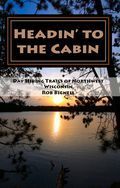
to In a New Light Gallery of Northwest Passages and to the Bookstore at Fitger's for hosting my Headin' to the Cabin meet-the-author event, the former on Friday, Aug. 2, and the latter on Saturday, Aug. 3.
Northwest Passages, in Siren, Wis., offers treatment facilities and centers for teen boys who are at-risk or suffering from mental illness in Northwest Wisconsin (Siren, Spooner and Frederic). The Bookstore at Fitger's, in Duluth, Minn., is located in the former Fitger's Brewery, which has been converted into a retail-entertainment complex on Duluth's Lakewalk.
There's one last stop in the summer book tour for "Headin' to the Cabin": I'll be at the City of Lakes Book Fair on Saturday, Aug. 10, at Annz’s Books in at the Chetek, Wis. The fair runs 11 a.m.-2 p.m. Hope to see you there!
Need an editor? Having your book, business document or academic paper proofread or edited before submitting it can prove invaluable. In an economic climate where you face heavy competition, your writing needs a second eye to give you the edge. I can provide that second eye.
Related articles
 Idlewild Outfitters hosts editor's meet-the-author
Idlewild Outfitters hosts editor's meet-the-author Editor's book on sale at The Bookstore at Fitger's
Editor's book on sale at The Bookstore at Fitger's
August 3, 2013
Consider organizing short stories into fix-it novel
If you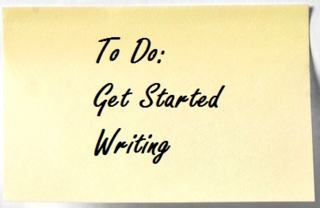 like to write short stories, you probably are frustrated with the limited number of markets available out there to publish them in. And while ebooks allow you to sell short stories, the short ebooks still aren’t particularly popular (After all, if a reader why spend 99 cents on a short story when the same amount will get you a full-length novel?).
like to write short stories, you probably are frustrated with the limited number of markets available out there to publish them in. And while ebooks allow you to sell short stories, the short ebooks still aren’t particularly popular (After all, if a reader why spend 99 cents on a short story when the same amount will get you a full-length novel?).
The obvious solution is to simply publish an anthology of short stories. Still, novels tend to be more popular than short stories, if only because many readers prefer a tale that lasts for a while; there’s something fun about going on a long adventure with a character or group of them.
Another possibility is to write a fix-it. This is when a series of short stories are organized into a novel. Excellent examples of fix-its are Rad Bradbury’s “The Martian Chronicles” and Isaac Asimov’s “The Foundation.”
To have a fix-it, you’ll need or have short stories that follow a single character or that center on a motif. “The Martian Chronicles,” for example, center on humanity’s settlement of Mars.
One problem with a fix-it, however, is it doesn’t necessarily hold together because there’s no overarching problem for a main character to resolve (Indeed, often the main character changes from story to story.). To resolve, there needs to be some overarching theme or motif that holds the story together. “The Foundation,” for example, explores how advanced human civilization avoids losing the knowledge it has accumulated over eons. You may need to rework your short stories slightly to add a problem that each short story incrementally works toward solving.
Need an editor? Having your book, business document or academic paper proofread or edited before submitting it can prove invaluable. In an economic climate where you face heavy competition, your writing needs a second eye to give you the edge. I can provide that second eye.
Related articles
 How to get readers engaged in your story
How to get readers engaged in your story 'Murder your darlings' to better engage readers
'Murder your darlings' to better engage readers
August 2, 2013
Offer readers a sample chapter page on website
If the book 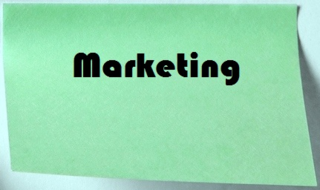 you’re promoting is the first one you’ve published, readers most likely will be unfamiliar with you or your writing. Further, given the vast number of other authors out there, a potential reader might decide to pass over you for another one who is slightly better well known or who has more writing credits to their name.
you’re promoting is the first one you’ve published, readers most likely will be unfamiliar with you or your writing. Further, given the vast number of other authors out there, a potential reader might decide to pass over you for another one who is slightly better well known or who has more writing credits to their name.
You can counterbalance this by giving readers a free sample of your writing, proving to them that you’re the superior writer with the best book.
For a novel, this passage should be a representative of your story and compelling. It ought to create some suspense (without giving away the plot), solely to get readers interested in purchasing the book.
For a nonfiction book, the passage also should be typical of what readers will find in your volume and as well as be intriguing. It ought not to give away the “secret” revealed in the book but instead create interest so that readers want to find out what it is and purchase your book.
Just how much should you give away? If a novel, the opening chapter in which the reader meets the main character and learns about the conflicts facing that hero probably is sufficient. If a nonfiction tome, samples of 1-2 pages long from three different chapters probably is enough.
Novelists who’ve published a series of books focusing on a single character sometimes offer “bonus” sections in which they give away unpublished writing involving their hero. This is a great idea, especially if you’ve written a lot of background material that was excised from a novel or have a short story about the character that just can’t seem to get published. At the same time, you must be careful not to post writings that are inferior to your novel’s quality. Doing so will turn off potential buyers.
For some models of Sample Pages pages, see:
g Novel
g Nonfiction book
Need an editor? Having your book, business document or academic paper proofread or edited before submitting it can prove invaluable. In an economic climate where you face heavy competition, your writing needs a second eye to give you the edge. I can provide that second eye.
Related articles
 How to write a novel synopsis for a lit agent
How to write a novel synopsis for a lit agent How to overcome annoying writer's block
How to overcome annoying writer's block Maintain 'fictional dream' when penning novel
Maintain 'fictional dream' when penning novel Decide what your book's website will look like
Decide what your book's website will look like
August 1, 2013
Select different fonts for paperback, ebook
You'll want 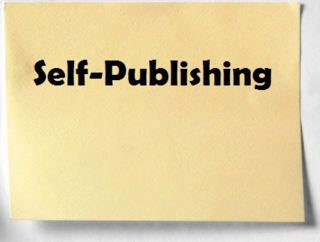 to use different fonts for the paper and any ebook/Web versions of your book. That’s because the eye responds differently to varying platforms for reading. A billboard likely will use large blocky letters while a magazine can get away with using typefaces in which the letters are thin.
to use different fonts for the paper and any ebook/Web versions of your book. That’s because the eye responds differently to varying platforms for reading. A billboard likely will use large blocky letters while a magazine can get away with using typefaces in which the letters are thin.
Regarding books, for the paper version use a serif font. Some studies indicate that serif typefaces are easier to read in print. I’d recommend Garamond, Calibri or Georgia. Stay away from Times New Roman, though, as it is a bit overused.
For an ebook or any website, use a sans-serif typeface. I’d suggest Arial, Trebuchet MS or Cambria. Avoid Helvetica, as it tends to be overused. Note that with ebooks, many self-publishing companies have pre-selected a single typeface, so you may have no choice in the matter.
Further, what’s easy on the eyes today may not be so easy tomorrow. Typefaces are children of trends, though this change occurs much more slowly than do the color of the year in fashion or the style of popular music. If this book is still in print 20 years from now, though, I’m confident today that I’ll need to change the above typeface recommendations to meet what will be popular then.
For the most part, your text will appear in the regular font of the typeface you select. Sometimes to emphasize a word, though, you will opt to place it in an italicized font of that typeface. That’s cool.
Sometimes it’s underscored instead, though. That’s not so cool, as it raises the question of which approach you prefer: underscore or italics? Then sometimes the word is both italicized and underlined. That’s definitely not cool at all. You’ll want to select one style and stick to it.
Whether to use italics or underscores is largely a matter of your publisher’s preference. In the absence of that, I’d recommend italics, as that’s ultimately what an underlined word tells a typesetter to do – to italicize the word – and in the age of word processing, we rarely use typesetters anymore.
Need an editor? Having your book, business document or academic paper proofread or edited before submitting it can prove invaluable. In an economic climate where you face heavy competition, your writing needs a second eye to give you the edge. I can provide that second eye.
Related articles
 Your acknowledgements and dedication pages
Your acknowledgements and dedication pages Entice readers with excerpt from next book
Entice readers with excerpt from next book Editor's latest book now out in paperback
Editor's latest book now out in paperback Select best typeface for your book
Select best typeface for your book



